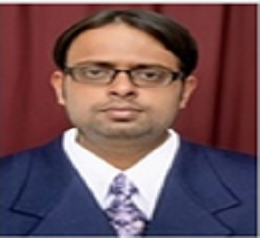Scholars International Conference on
Advanced Materials Science and Engineering
THEME: "Current and Emerging Trends in Materials Research and Engineering"
 25-26 Nov 2021
25-26 Nov 2021  ONLINE & VIRTUAL
ONLINE & VIRTUAL THEME: "Current and Emerging Trends in Materials Research and Engineering"
 25-26 Nov 2021
25-26 Nov 2021  ONLINE & VIRTUAL
ONLINE & VIRTUAL 
School of Materials Science and Technology, IIT (BHU), India
Title: An exploration of microstructural in-homogeneity in the 6082 Al alloy processed through room temperature multi-axial forging
Nikhil Kumar is an Assistant Professor in the School of Materials Science and Technology, IIT (BHU) from November 2020 to till present. He completed his Master's degree (2013) and Ph.D. degree (2017) from the Metallurgical and Materials Engineering Department, IIT Roorkee. He received the department of defense, USA fellowship to pursue his post-doctoral work (2017-2019) from Applied Mechanics and Materials Research Laboratory (AMMRL), Howard University, Washington DC, USA. He received the senior institute post-doctoral fellowship from the IIT Mumbai to pursue his post-doctoral work (2019-2020) in the Metallurgical Engineering and Materials Science Department, IIT Mumbai. Dr. Nikhil Kumar worked as Assistant Professor at VIT Vellore, Vellore campus (3rd June 2020-3rd November 2020) before he joined SMST, IIT (BHU).
In the current work, open die multi-axial forging (MAF) of 6082 Al alloy was performed at room temperature. The resulting microstructure and mechanical properties were found to have a gradient from the periphery towards the center. The resulting inhomogeneity was quantified with the help of electron backscattered diffraction, X-ray diffraction analysis, hardness and tensile strength measurement. The recrystallized grains were found after the partition of inverse pole figure (IPF) maps by using the criteria (Grain orientation spread<1?& boundary misorientation angle>15?). The sub-grains were found by partition of the IPF-maps by using the criteria (Grain orientation spread>2? & 2?